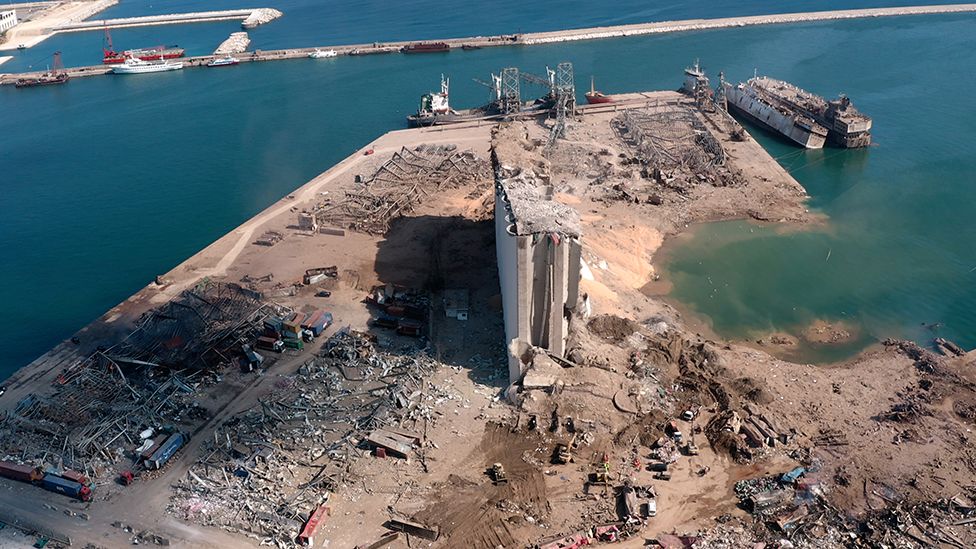Beirut explosion: Before-and-after images
- Published

The explosion at a portside warehouse in Beirut sent devastating shockwaves across the Lebanese capital, decimating seafront buildings and causing widespread destruction.
At least 137 people died and about 5,000 others have been injured. Satellite and aerial images show the extent of the physical damage to a city more accustomed to such scenes as a result of war than accident.
The Orient Queen cruise ship was docked in Beirut a few hundred metres from the warehouse when the explosion happened.
Damage from the blast caused her to take on water and capsize. One crew member died and another is still missing, according to the ship's operators Abou Merhi Cruises. The company's dockside offices were also wiped out by the force of the blast.
The grain silos - the large white building on the dockside - took the brunt of the blast.
Genevieve Langdon, Professor of Blast and Impact Engineering at the University of Sheffield, said the grain inside the silo would have compacted under the enormous blast pressure, but would also have absorbed and deflected some of the blast.
"As the blast wave struck the silo wall, it probably dissipated a great deal of energy," she said. "Without the grain silos in the way, we expect the damage in the area behind them would have been even worse."
Aid agencies estimate that around 300,000 people have been left homeless by the explosion and there are fears of food and medicine shortages.
Doctors Without Borders (MSF) president Mego Terzian said warehouses storing medicines and vaccines in the port were damaged, and the country's largest dialysis centre, in central Beirut, was completely destroyed.
He compared the aftermath of the blast to destruction caused during the country's 1975-90 civil war.
"We lived difficult and similar experiences during the Lebanese war," he told AFP.
Lebanon's maritime trade will now shift to the country's second biggest city, Tripoli, so that the country can start to receive medical aid, foodstuffs, fuel and basic goods. Qatar, Kuwait and Jordan are reported to be sending field hospitals.
The shopping centre, restaurants and souks in downtown Beirut, to the west of the blast area, didn't escape damage. Windows and glass shopfronts were shattered by the explosion. The city's governor, Marwan Abboud, said repairing public property and heritage buildings was likely to cost billions of dollars.
More on the explosion in Beirut
- WHAT HAPPENED: What we know so far
- BACKGROUND: Why the country is in crisis
- IN PICTURES: Chaos and destruction after the blast
- AMMONIUM NITRATE: What is it? How dangerous is it?
Worshippers at the Mohammad al-Amin Mosque, who had been celebrating Eid together only days ago, have started to clear the debris left by the blast.
The clean-up also started at the Saint George Maronite Church.
.